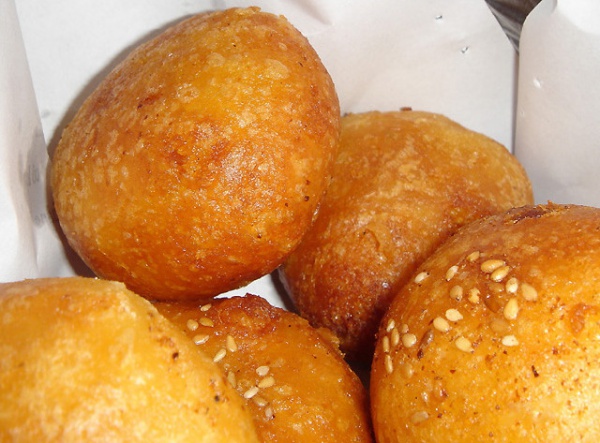Facts About Bánh rán
Bánh rán is a cherished traditional Vietnamese snack, particularly popular in northern Vietnam. These deep-fried glutinous rice balls are a delightful treat. In Vietnamese, "bánh" encompasses a broad range of food items such as cakes, pies, and pastries, while "rán" simply means "fried."
The outer layer of bánh rán is crafted from glutinous rice flour and is commonly coated with white sesame seeds, providing a satisfying crunch. Inside, you'll typically find a sweet mung bean paste accented with a hint of jasmine essence. In northern Vietnam, there's a unique twist: the filling is intentionally kept separate from the shell, so when you shake the bánh rán, it produces a fun rattling sound.
In the southern region, a comparable treat known as bánh cam is quite popular. Although it closely resembles bánh rán in appearance, it lacks the jasmine essence and the filling is not separated from the shell. Another significant difference is that in the north, bánh rán is often served with a drizzle of sugary syrup.
The northern version also offers a savory variant. This version is commonly stuffed with a mixture of minced pork, wood-ear mushrooms, dried vermicelli, carrot, salt, pepper, and raw egg, creating a soft and flavorful filling. The savory bánh rán is typically enjoyed with a sweet and sour chili sauce and accompanied by sliced radish or papaya.
Interesting fact: Bánh rán is also the Vietnamese name for the Japanese treat dorayaki, popularized by the manga character Doraemon.

 Laos
Laos